Table of Contents
What is Hibiscus?
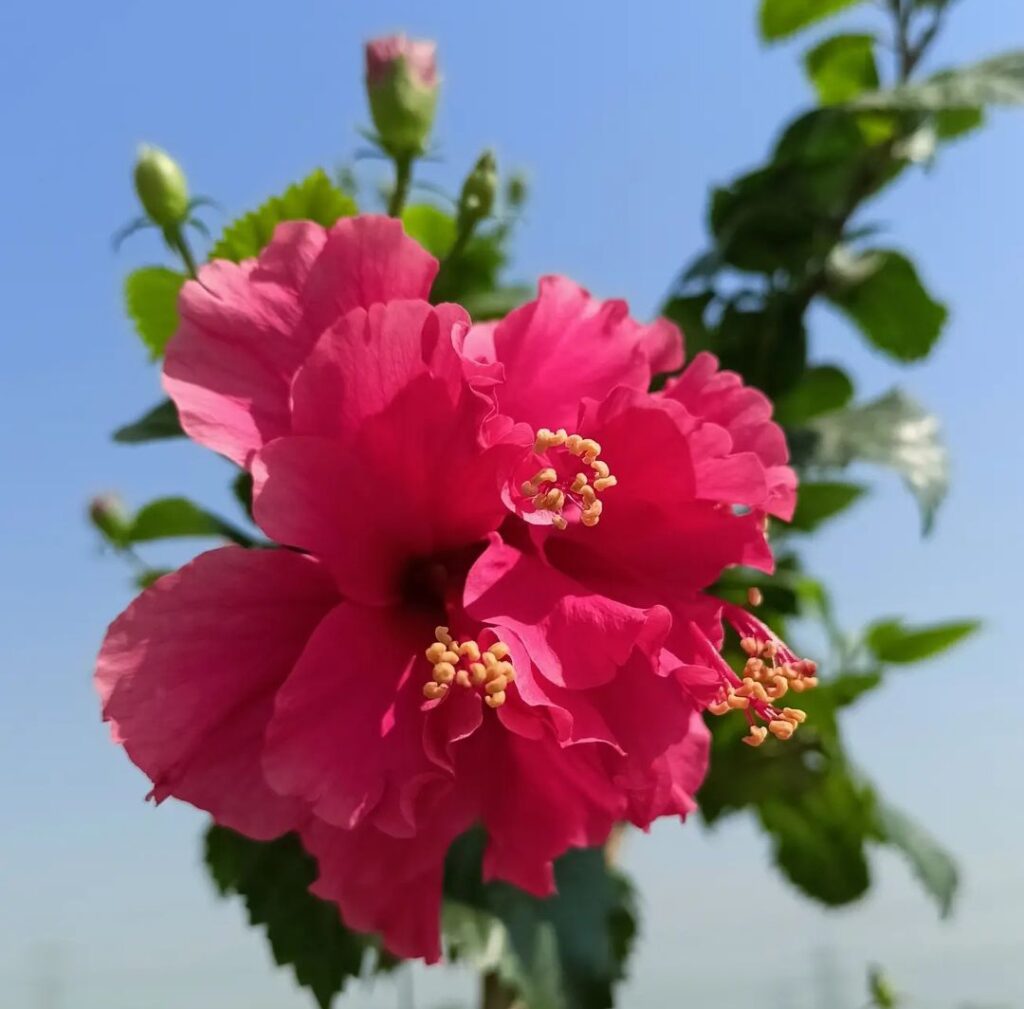
A kind of flowering plant called hibiscus is distinguished for its enormous vivid blossoms. The genus Hibiscus contains a large number of species and hybrids and it is a member of the Malvaceae family.The vibrant blooms of these plants which might be red, pink, white, yellow or orange are frequently the reason they are grown.
Additional uses for hibiscus include:
Hibiscus blooms can be added as a garnish to various foods or used in teas and jams. Known by many other names, including “roselle” or “sorrel,” hibiscus tea is prized for its acidic taste and rich crimson hue.
Because of its possible health benefits such as decreasing blood pressure and promoting heart health hibiscus is occasionally utilized in traditional medicine.But before using it medicinally it is best to speak with a healthcare professional.
The plant is widely found in tropical and subtropical regions of the world and grows well in warm weather.
How to Make Hibiscus Tea
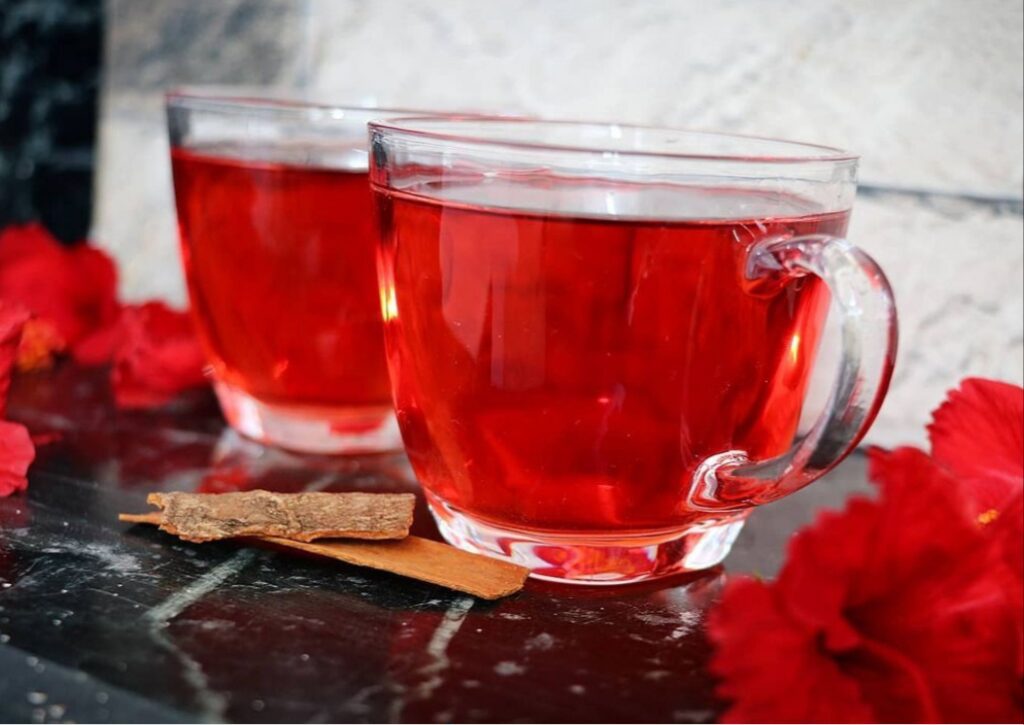
Ingredients: Two cups of fresh or half a cup of dried hibiscus flowers
Eight glasses 1/4 cup water add extra honey if preferred for a sweeter tea.
Three tsp Juice from fresh limes
Guidelines
If using fresh hibiscus flowers cut off the calyx or the portion of the flower that is green and linked to the stem. The pistil, which is the thin tube that resembles a thread and is attached to pollen in the center of the flower, can either be removed or left in place. If you are using dried flowers, you can skip this step.
Bring water and hibiscus blooms to a boil in a large pot. When the water reaches a boiling temperature, turn off the fire and cover the pot. You can now add other herbs or ingredients, such lemon zest, basil, and lemon grass.Give the tea a good 15 to 20 minutes to steep. Add the lime juice and honey and stir it until properly mixed. Pour the tea through a strainer.
Hippopotamia tea can be served warm or chilled for a few hours in the refrigerator. In either case, it tastes great.
How to make Hibiscus Tea from dried flowers
Instructions
Boil Water:
Fill a kettle or saucepan with 2 cups of water and bring it to a full boil.
Add Hibiscus Flowers:
Put the dried flowers in a heat-resistant container or teapot.
Steep the Flowers.
Immediately pour boiling water over the hibiscus flowers.
Allow steeping until they are soft about 5-10 minutes. Long steeping usually means very strong or tart tea.
Strain the Tea.
After steeping pour the tea through a fine mesh strainer, catching the flowers.
Sweeten(optional).
Add sweetener to taste. Hibiscus tea has a naturally tart flavor with this in mind you may want to balance it with a bit of honey or sugar.
Serve:
Serve hot or cool then serve over ice for a refreshing cold drink.
Garnish.
Slice of lemon or a few sprigs of fresh mint.
How to make hibiscus tea for High Blood Pressure at home
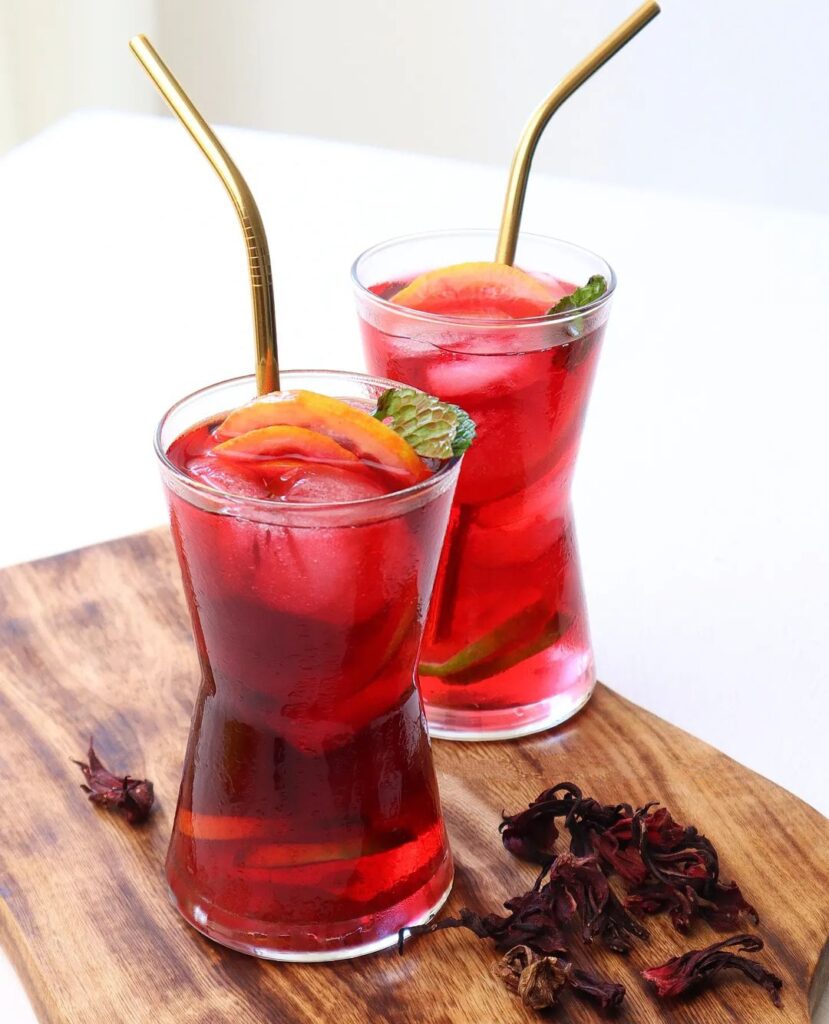
Steps and Ingredients for Hibiscus Tea.
Dried hibiscus blooms half a cup.
Four glasses of purified water.
Ten to twenty drops of liquid stevia or any other preferred sugar substitute.
Steep half cup of the dried flowers for 10 to 15 minutes in 4 cups of boiling water.
Once you’re done pour in your sugar substitute and serve warm or chilled with ice. If you would rather use date syrup, add a few teaspoons at first, or more until the desired sweetness is reached.
Pomegranate juice (straight, no sugars) can also be added to lessen the tartness and is almost as healthy.
Although hibiscus tea has health benefits taking too much of anything can have unfavorable effects on your body. As a result, it’s advisable to just drink one quart of this hibiscus tea recipe every day.
Benefits
Antioxidant Rich : Hibiscus tea has antioxidants including polyphenols and anthocyanins that help fight oxidative stress and shield cells from harm from free radicals.
Promotes Heart Health : Research indicates that hibiscus tea may have a hypotensive effect on hypertensive persons by lowering blood pressure possibly as a result of its natural diuretic properties.
According to some research hibiscus tea may help to improve overall cardiovascular health by lowering LDL (bad) cholesterol and raising HDL (good) cholesterol levels.
Aids in Digestion : Due to its mild laxative action and capacity to encourage regular bowel movements hibiscus tea can aid in the relief of digestive problems such as constipation and bloating.
Supports Weight Management : By increasing metabolism and decreasing the absorption of carbs and glucose the tea may help with weight management.
Impact on Inflammation: The anti-inflammatory elements in hibiscus tea reduce the tendency of inflammation and their symptoms in diseases such as arthritis.
Immune System Support: Its high content of vitamin C makes sure that hibiscus tea offers immunity to prevent diseases and infections.
Encourages Healthy Skin : The antioxidants and vitamin C in hibiscus tea help to maintain youthful healthy skin by lowering oxidative stress and encouraging the formation of collagen.
Possible Blood Sugar Regulation : Based on certain research hibiscus tea may help control blood sugar levels and enhance insulin sensitivity which may be advantageous for those who have diabetes.
Promotes Liver Health : The antioxidants in hibiscus tea can shield the liver from harm and aid in its role as the body detoxifier.
Hydration : Drinking hibiscus tea can help you meet your daily fluid needs which are critical for your general health and wellbeing.
Benefits for Mood and Mental Health : Due to its mild sedative qualities hibiscus tea may have a relaxing impact and may help lower levels of tension and anxiety.
Natural Diuretic : The diuretic qualities of the tea may aid in increasing the production of urine, which may assist lessen bloating and fluid retention.
May Help with Menstrual Pain: Because hibiscus tea has anti inflammatory and muscle-relaxing qualities some people find that it helps reduce menstrual cramps and discomfort.
Related post you may like: Best Vitamins for Hair Growth and Thickness
For fitness content click here
Frequently Asked Questions FAQs
What are Benefits of hibiscus tea for skin?
Hibiscus’s high mucilage content improves the skin’s capacity to hold onto moisture.
Hibiscus tea is highly rich in antioxidants and vitamins which hold a number of benefits to the skin. These antioxidants include anthocyanins and polyphenols, which contribute to the reduction of oxidative stress, hence protecting the skin from potential damage by free radicals, which may lead to the early signs of aging. High vitamin C levels help boost collagen production, which is of utmost importance in facilitating smooth, elastic skin with less wrinkle visibility. Additionally, hibiscus tea contains anti-inflammatory properties that comfort the inflamed skin and reduce its redness. This would provide a glow to the skin and make it look younger with regular intake, while the hydration effect of the tea supports general skin health.
What are Hibiscus tea side effects estrogen?
Frequent consumption of hibiscus tea by women may elevate their estrogen levels, perhaps resulting in liver damage.
What is Best time to drink hibiscus tea
It is ideal to drink hibiscus tea at different times, depending on the desired outcome. Drinking hibiscus tea in the morning improves water levels and metabolism; when taken between meals, it supports appetite and digestion. An afternoon cup is refreshing, while evening and bedtime consumption can be done for relaxation and to help with digestion. Since it is caffeine-free, hibiscus tea may be taken any time of the day, provided moderation is kept in mind to avoid any possible diuretic effects.
What is best time to drink hibiscus tea for weight loss?
The best times to drink hibiscus tea for weight loss are between meals and in the morning. It controls one’s appetite and snacking between meals and also kick-starts metabolism in the morning. Drinking it later in the day will help stay hydrated and avoid eating too much later. It is also supposed to help with water retention and bloating due to its mild diuretic effect. For maximum benefits, hibiscus tea should be consumed as part of a healthy diet and regular exercise. Remember, too, that one should drink this tea in moderation for it can also have possible adverse diuretic effects.
Is it safe to drink hibiscus tea everyday?
Generally speaking, hibiscus tea is safe to drink every day for most people and has quite a few health benefits. It is fully packed with antioxidants, and it has been said to be beneficial for blood pressure, digestion, and skin concerns. But remember, moderation is the key. Too much intake may cause certain side effects, such as diuretic effects or interaction with some drugs, like antihypertensives and diuretics. Also, the extract of hibiscus tea may well be avoided by pregnant or lactating women without prior consultation with a health expert. Probably, this rate can hold good for maximum consumption of 1-3 cups per day for an average person; however, one should always heed their body and make the adjustments as required depending upon the individual health requirement.

Ankush Kumar is a professional content writer and the founder of Healthnick.com. He is a health and wellness enthusiast with a deep interest in nutrition, fitness and holistic living. Harish is committed to delivering research-based insights on various health topics. He enjoys exploring new trends in health, experimenting with nutritious recipes, and staying active.




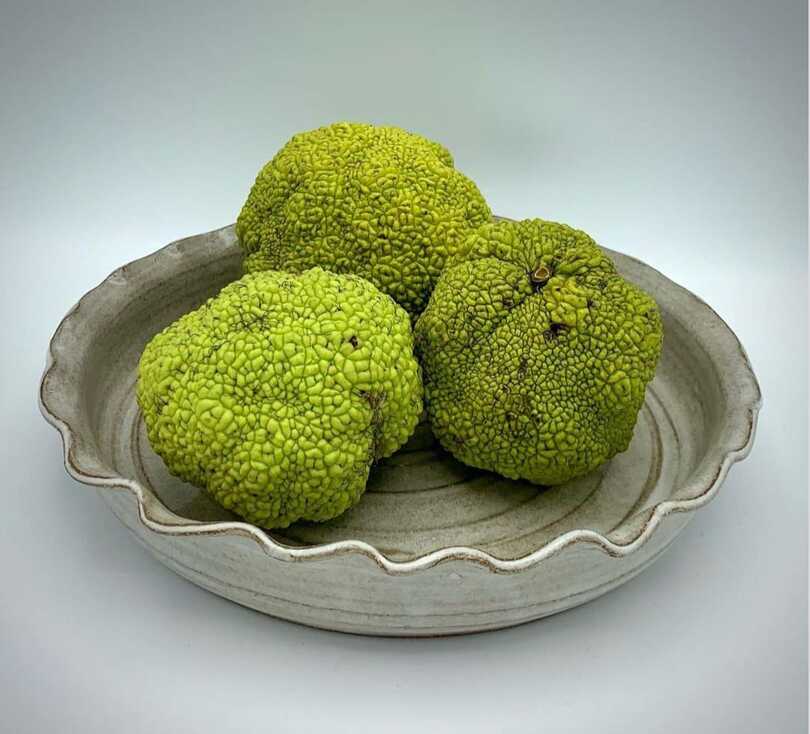

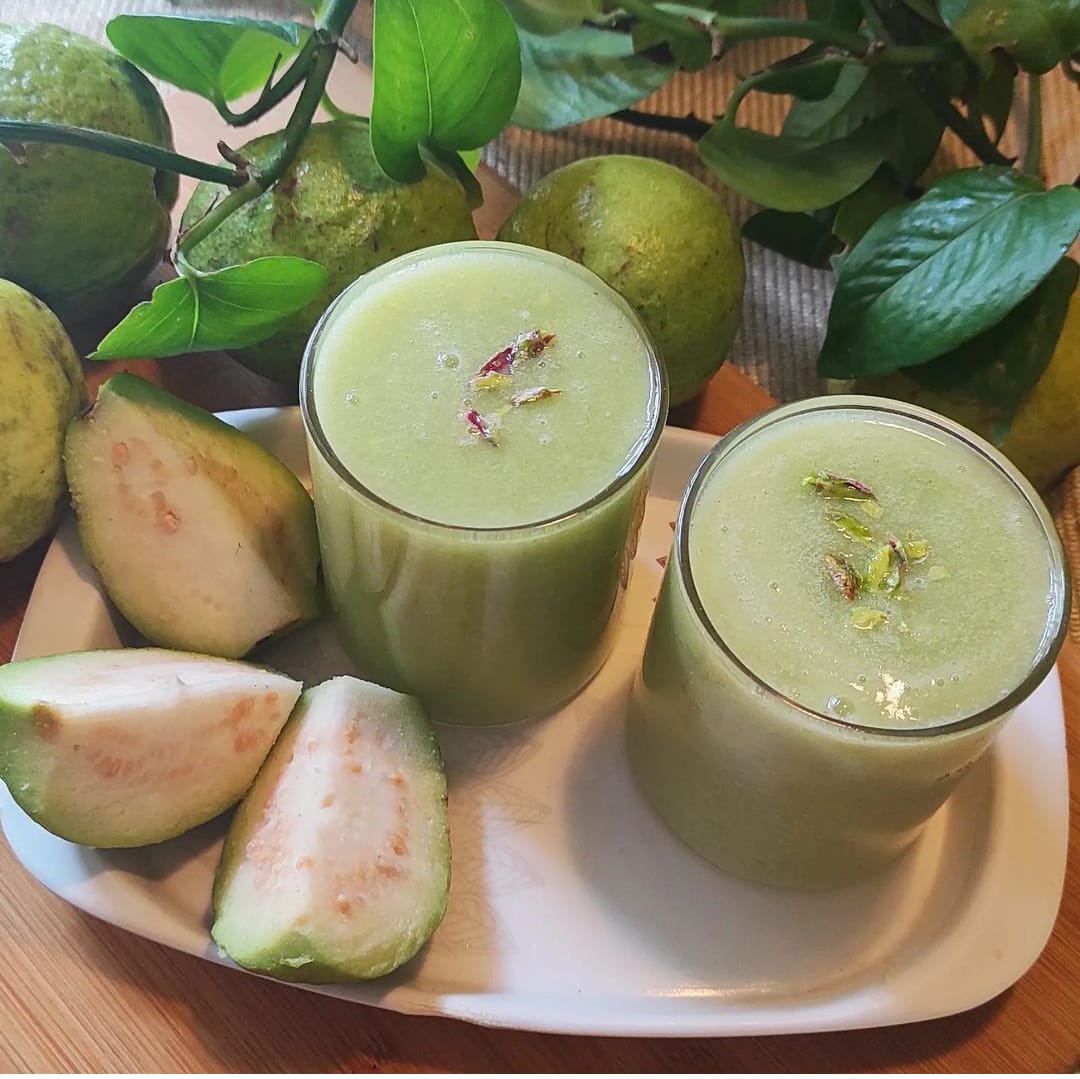
1 thought on “How to make Hibiscus Tea from dried flowers”